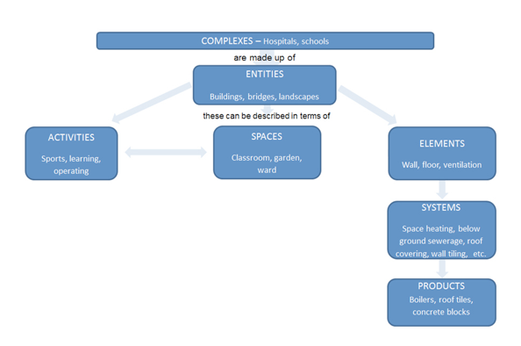Classification Systems: Uniclass 2015
BIM is solving many problems in the design and construction of built assets, particularly when it comes to collaboration, and we are slowly seeing commonly understood, well-received approaches and definitions surrounding BIM.
For BIM as a concept, this is great news and particularly good news for companies who have been championing BIM for some time. However, while the UK’s PAS 1192 suite is soon to be internationalised in the form of ISO 19650, one particular issue still often burdens us – a lack of appreciation for a unified classification system.
Why Do We Need a Unified BIM Classification?
In order to aid efficient specification, scheduling and cost estimation, it is important to have a classification system that allows model elements to be described, identified and organised within a BIM environment. By using a unified classification system for grouping model elements, it becomes possible to easily find, extract and analyse data.
Let’s say you would like to calculate the amount of floor space occupied by meeting rooms in a project. By tagging spaces by function it becomes possible to easily gather together spatial information about meeting rooms. Using a unified classification for how spaces are classified reduces ambiguity and ensures consistency. Making it possible to collect and compare data across multiple projects if need be.
Using Uniclass 2015 it becomes possible to classify a wide range of asset elements, from facilities such as a school to products or components such as a desk or floor tile.
What is Uniclass 2015?
Uniclass 2015 is a classification system designed to solve the issue of classifying elements in construction. Initially created in 1997 by Construction Project Information Committee (CPIC), a pan-industry organisation, the initial version was later revised to Uniclass 2 after it was criticised for not being genuinely unified and poorly integrated with the various sectors of the construction industry.
Uniclass 2015 covers all sectors of the industry and extends the scope of Uniclass 2 to allow consistent classification of buildings, engineering, landscape and infrastructure. It’s relevance in the classification of model elements within BIM and the wider construction industry, will shortly see it set out as the recommended classification system for UK projects adopting BIM within ISO 19650 National Framework Annex.
Using Uniclass 2015 it becomes possible to classify a wide range of asset elements, from facilities such as a school to products or components such as a desk or floor tile.

How Does Uniclass 2015 Work?
Updated regularly by NBS, Uniclass 2015 is currently based on 7 core tables. These 7 tables are broadly hierarchical and consist of the following:
Complexes (Co) – used to describe the overall asset in terms of what it is. Example classifications include University (Co_25_10_92), Residential Properties (Co_45_10_74) and Business Parks (Co_20_15_08).
Entities (En) – includes elements such as buildings, bridges and tunnels. Within a University complex (Co_25_10_92), you may want to classify Ball courts (En_42_15_06) and Access roads (En_80_35_01).
Activities (Ac) – this includes the function of an element. Examples may include Lecturing (Ac_25_10_47), Teaching (Ac_25_10_88) or Dining (Ac_45_45_22).
Spaces/Locations (SL) – in buildings, spaces are provided for various activities to take place. Examples include Artists’ studios (SL_25_20_04), Reception areas (SL_20_15_71) as well as Circulation spaces (SL_90_10).
Elements/Functions (EF) – describe a specific part of a building or asset. If the asset was a bridge. The element you might want to classify could be Bridge abutments and piers (EF_20_50), or if its a building the element of interest might be the Roof (EF_30_10).
Systems (Ss) – more granular than elements, systems are the collection of components that go together to make an element or to carry out a function. For example, in the case of a Roof, the system might be a Light steel roof framing system (Ss_30_10_30_45).
Products (Pr) – are the individual components that can be used to make a system. In the case of Light steel roof framing system (Ss_30_10_30_45), one of the products might be Roofing clamps (Pr_20_29_88_71), or Carbon steel beams (Pr_20_85_08_11).
Each code consists of either four or five pairs of characters. The first pair identifies which table is being used. The four following pairs represent groups, sub-groups, sections and objects. An example includes:
Pr_35 Covering and finishing products
Pr_35_31 Formless covering and finish products
Pr_35_31_05 Asphalt, bitumen and resin mixtures
Pr_35_31_05_03 Asphalt concrete (AC) base courses
Pr_35_31_05_04 Asphalt concrete (AC) binder courses
Pr_35_31_05_05 Asphalt concrete (AC) surface courses